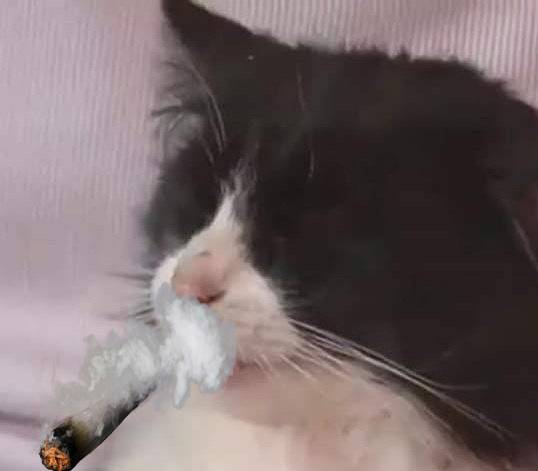But it only needs to reach 165°F, about 74°C.
Basically every food package says so.This is correct; always cook to temp.
Dude is cooking chickcoal
Now that we’ve discovered how to slap coal into existence, how much force would it take to turn a frozen Butterball into a diamond?
205°C? You’re slapping your chicken too long, son. Your mother and I are worried.
135,000 slaps!
I was hungry
not anymore
I’m hungrier because I put so many calories into slapping.
How many though? Could please someone think of the math? 😭
About 132 kcal, if your calorie to chicken heat transfer is 100% efficient.
For the 23k average slaps or the one with hypersonic speed?
They work out to the same total amount of energy.
Including acceleration and deceleration? Hm
The kinetic energy of an object is equal to the energy that was required to accelerate it.
Fun fact: someone actually did it
I was going to link it if no one else had. Glad I wasn’t the only one that recalled that lol
Damn that was impressive! Also, I’ll have to let my little brother know that if he keeps beating his meat so much he might accidentally cook it.
incredible engineering feat !
this will definitely fulfill someone’s kink.
The chicken ran away when I tried to slap it.
Geez, you need to freeze it first. Didn’t you read the abstract?
The real question is if you slapped hard enough to raise the temperature to 74C (undergrad clearly doesn’t cook), what would the temperature of your hand be? And for the engineers: how far up your arm would you have to measure before the temperature returned to normal body temperature? And for the bio/kin/nursing/premed students: how much would need to be amputated?
My hand is a lot smaller than a chicken, so I hope everyone is prepared to have roast my hand as well
Lol i dont know the math but the speed required to apply that force means theres a sonic boom as well right? Along with the bubblewrap crack of your arm shattering in the process of somehow applying this force/acceleration. I actually wonder if there would be heat before the slap since the distance traveled is so short. Is there enough air between your windup and the chicken?
And for the bio/kin/nursing/premed students: how much would need to be amputated?
Hi there! I’m a certified surgeon in my DnD roleplay and I can safely say you’ve just amputated your own arm at that speed at just below the shoulder!
Don’t forget, the chicken is frozen, so you also have to take into account the latent heating fusion to melt the chicken before you can raise the temperature
This calculation also assumes that this is an inelastic collision where all the energy is absorbed into the chicken and not into your hand or into the air as sound or other kinetic energy.
Further the chicken is frozen solid, and, presumably, your hand is not. Of the two objects in this collision that could deform inelasticity and absorb the larger fraction of the energy, my money would be on the 0.4 kg slab of raw meat rather than the 1kg frozen billiard ball.
Since we’re being pedantic, the feeezing point of unbrined chicken is -3 C. Most meats are not frozen at exactly 0 C since the water contained in the cells is far from pure.
But yeah, slapping will be a super lossy process and this analysis will be off by quite a bit.
Touché!
I wonder if there’d be any fractional freezing at 0C 🤔
Great… now I’m imagining raw chichen slushie 🤮
One must also consider the thermal conduction of the chicken. Slapping it, either once or multiple times, on a single area will impart energy to that area, raising the temperature there, but it will take time for that to disperse throughout the fowl. Thus will inevitably lead to the slapped area/areas being overcooked and the rest being dangerously undercooked. Losses to the environment must additionally be taken into account unless sufficient insulation is employed to mitigate this.
So would you say that a rotisserie slapping technique would optimal in this scenario?
It’s optimal for your mom!
Yes, I think the chicken would need to be rotating, you should use both hands to spread the warmed area, and be prepared to administer more slaps than were calculated.
That’s assuming an isentropic chicken though. You need even more slaps to make up for the heat loss to the environment.
Why isn’t it a concern what slapping at this speed does to your hand/arm?
Because we are men, and men feel no pain when we slap things.
This is why we slap each other on the back after losses in sports, and why pimpin ain’t easy.
At 400F it would no longer be a chicken but a pile of glowing cinders. A chicken is cooked at 165F.
What I learned from this is never let a physics major cook you dinner, unless you want charcoal for chicken (200C !?!)
And they didn’t defrost it first 🫠
0 C wouldn’t quite be frozen solid for chicken since it’s not pure water. According to a quick search, chicken (unbrined) freezes at -3 C. So technically it is defrosted, but it should start out closer to 10 C for good results.
Luckily, it’s a linear relationship and they gave us the temp change per slap. So, if we assume the chicken has thawed in the fridge (40°F) and we want to reach 165°F for food safety, we only need
(165 - 40)°F * (5°C / 9°F) / (0.0089 °C / slap) = 7803 slapsAlthough, to be honest I think this would only work for a spherical chicken in a vacuum, as otherwise you’d be losing too much heat between slaps. And even in a vacuum, you’d lose some heat via radiation… So really, you should stick a temperature probe in there and just keep slapping until it reaches 165°F. Don’t even bother counting.
Sorry for the silly units, I only know food safety temperatures off the top of my head in °F.
Yeah 60c is done for chicken. That’s where meat goes from pink to white. It takes 18 min to kill dangerous food bacteria at that temp.
I was gonna say to start laying off when it gets to 165F, I don’t think residual heat will help in this case 😁
And what would that do to my hand?
If you could cook a chicken that fast with one slap, wouldn’t it be disintegrated from the force of the blow?
This isn’t going to be accurate, it’s ignoring a key aspect of the heat that will be generated, friction. When designing materials for prosthetics we have to be aware of how much friction occurs between the material and skin. If the amount of friction is too great, the material can create enough heat to damage tissue.
The formula for the skin friction coefficient is cf=τw12ρeue2, where ρe and ue are the density and longitudinal velocity at the boundary layer’s edge.
It’s also ignoring your hand would also heat up, ignoring the energy converted to sound, ignoring the heat loss to the environment, ignoring both your hand and the chicken would disintegrate if you hit it that hard, therefore transferring most kinetic energy without converting it, ignoring the enthalpy of fusion (they said it’s frozen)…
TLDR: it’s silly, just for funsies












